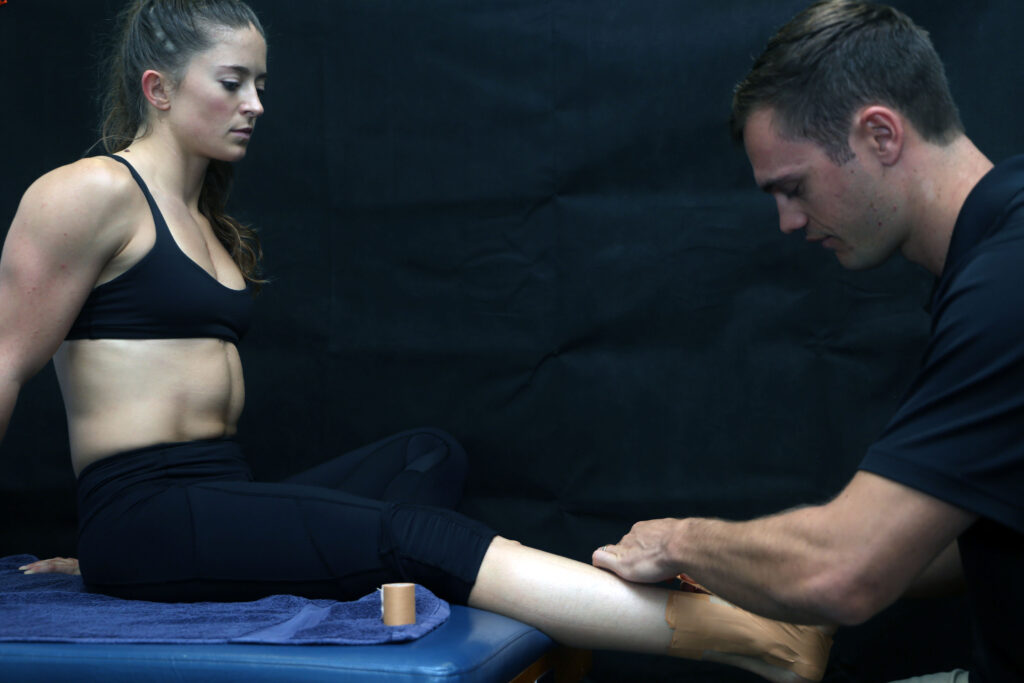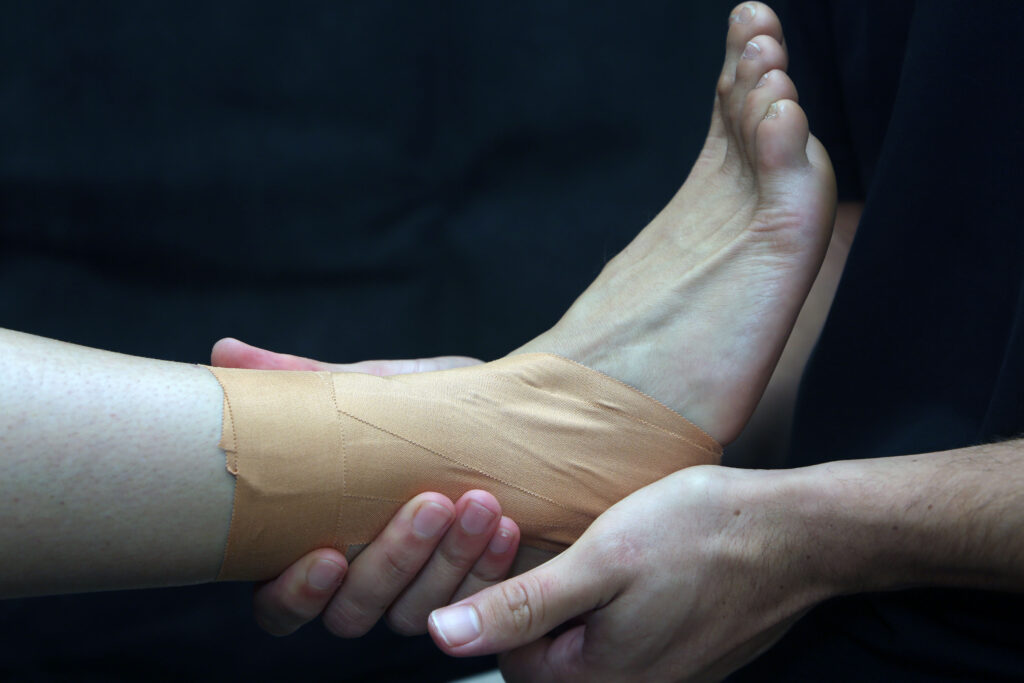If you’ve ever rolled your ankle during a run or twisted it on uneven ground, you’re not alone. Ankle sprains are one of the most common sports injuries we treat at MGS Physio. Knowing how to strap a sprained ankle properly can help stabilise the joint, reduce swelling, and prevent further damage. But it has to be done right.
Here, we break down the right way to strap your ankle—and the mistakes to avoid along the way. Whether you’re recovering from injury or trying to prevent re-injury, this guide will help you take the right steps.
Why Strapping Matters
Strapping, also called taping, is a key part of managing a sprained ankle. It provides support during movement, gives your ligaments a chance to heal, and helps restore confidence when you’re back on your feet. However, incorrect strapping can cause more harm than good.
Sports physiotherapy can teach you how to tape correctly and assess whether it’s suitable for your injury stage. Explore our sports physiotherapy services to learn more.
Step-by-Step: How to Strap a Sprained Ankle
Before you begin, make sure you have rigid sports tape and pre-wrap (optional). Strapping should only be done if there’s no fracture and swelling is under control.
1. Prepare the Skin
Clean the area and shave any hair if necessary. You can apply under-wrap or adhesive spray for comfort.
2. Anchor Strips
Place anchor strips around the lower leg and mid-foot to serve as the base for your tape. Don’t pull too tight—you want stability, not restriction.
3. Stirrup Strips
Apply stirrup strips from the inside of your leg, under the heel, and up the outside. These support the lateral ligaments, where most sprains occur.
4. Figure 6 and Heel Locks
Use figure-6 and heel lock patterns to control ankle movement and reinforce the joint. These should feel snug but not cut off circulation.
5. Finish With a Locking Strip
Secure everything with a final strip over the anchors. Make sure you can still wiggle your toes and that the tape isn’t causing numbness or tingling.
Mistakes to Avoid When Strapping an Ankle
Strapping is a skill—and like any skill, it’s easy to get wrong without proper training. These are the most common mistakes we see:
1. Taping Too Early
Taping immediately after injury can trap swelling and increase pressure. Wait until acute inflammation settles (usually 48-72 hours).
2. Taping Too Tight
Cutting off circulation won’t help your recovery. If you feel pins and needles, or your foot changes colour, remove the tape immediately.
3. Using the Wrong Tape
Elastic or non-sports tape won’t provide enough support. Stick to rigid sports tape designed for joint strapping.
4. Skipping Professional Guidance
Strapping is most effective when guided by a physio. At MGS Physio, we teach you how to strap properly or do it for you as part of a full treatment plan. Check out our full list of services.
When to See a Physio
If your ankle is severely swollen, bruised, or painful to walk on, book an appointment before you attempt to strap it. A proper diagnosis is important to rule out fractures and assess the severity.
Physiotherapists help you recover safely with:
- Manual therapy to reduce swelling and restore movement
- Tailored rehab exercises to strengthen the ankle
- Taping support to prevent re-injury
Meet our experienced team and see how we help clients get back to doing what they love.
Recovery Beyond Taping
Strapping is only one part of your recovery. A full rehabilitation program is what gets you moving again with confidence.
At MGS Physiotherapy, we focus on:
- Individualised treatment plans
- Hands-on care
- Exercise-based rehab
- Long-term injury prevention
We don’t just treat the injury—we guide you through the full recovery process.
Final Tips for a Safe Recovery
- Rest when needed: Don’t push through pain
- Follow your program: Rehab is progressive for a reason
- Stay active safely: Cross-train or modify workouts as advised
- Ask questions: We’re here to help you understand every step
Take the Next Step
Strapping a sprained ankle can be a useful tool, but it’s only effective when done correctly. Don’t risk prolonging your injury with DIY fixes. Trust the experts at MGS Physiotherapy to guide you through recovery with care, precision, and support.
We have clinics across Manly, Dee Why, North Curl Curl, and Sydney CBD, ready to help you get back on your feet.
Call now to book your sports physio appointment with MGS Physiotherapy.
CALL NOW TO BOOK YOUR APPOINTMENT


